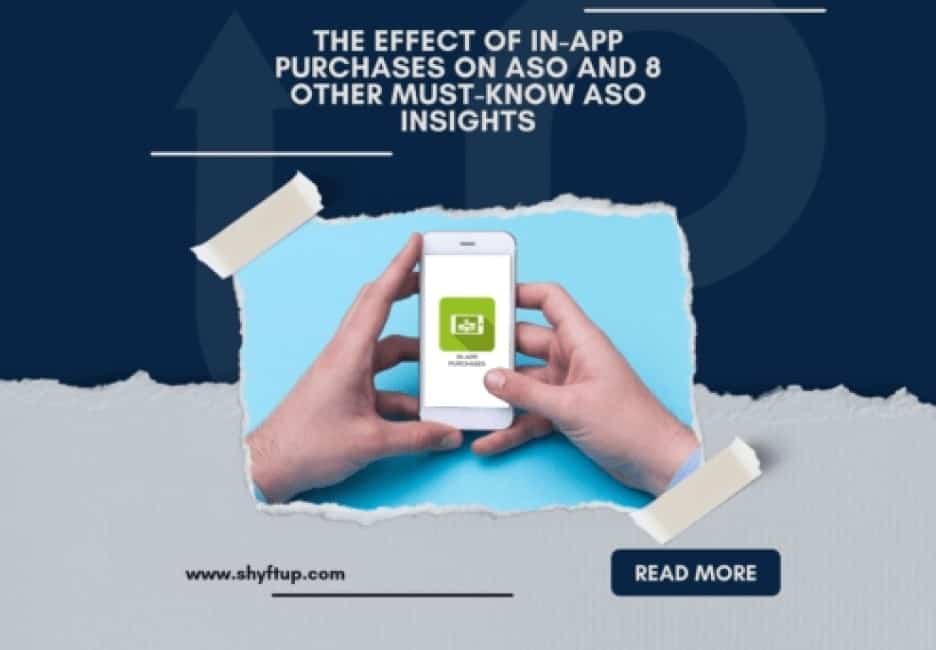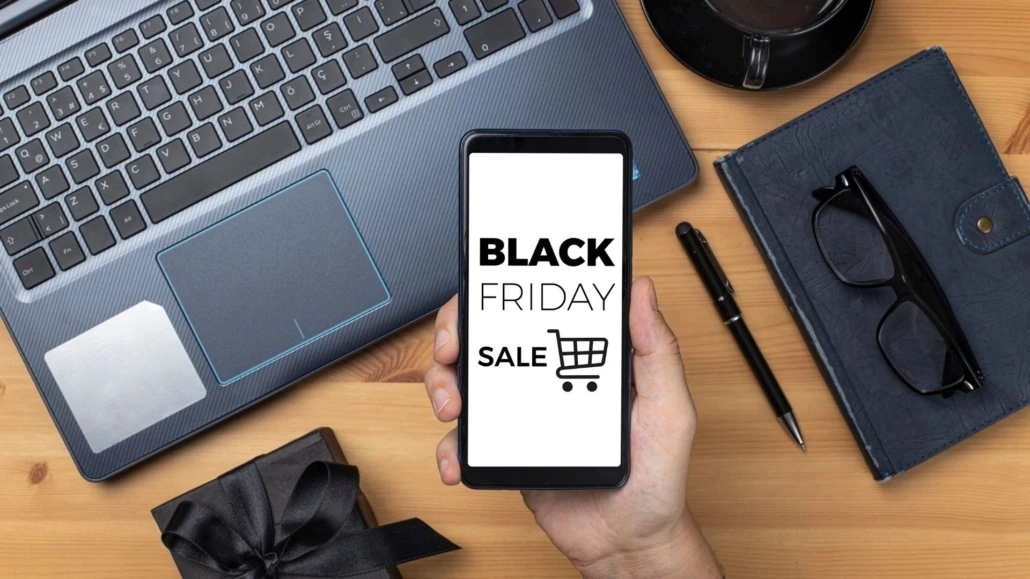
The Effect of In-App Purchases on ASO & 8 Other ASO Insights
Developers invest so much time in constructing their apps. As a result, they lose sight of the fact that there’s much more work ahead. Some of the biggest challenges lie in launching successfully on the two mainstream marketplaces – Google Play and the Apple platform (The App Store). With millions of apps and annual downloads in the billions of dollars, the competition for users’ attention is intense. There are numerous categories for market entry, each one representing a complex path forward. It calls for an integrated approach, applying multiple marketing strategies and tactics.
This article exposes the crucial questions and considerations facing new mobile market entries to initiate and accelerate user downloads. In addition, it lays out the bends and potholes waiting to trip you up. Indeed, getting traction without ASO is like riding a bike with no handlebars.
1. In-app purchase revenue: How does this tie in with ASO?
New developers charging a download fee are generally a turn-off to potential users. Why? Because there are too many free alternatives available throughout the app stores. However, monetizing is possible while still allowing users free entry into the app by taking full advantage of an innovative concept – In-App Purchase (IAP) revenue. In fact, the earnings potential can match or exceed premium competitors, even those with a headstart on you.
The IAP metrics emerging from reliable sources are stunning (although not updated yet to 2021/2.)
- IAP revenue makes up approximately 48.2% of total mobile app earnings.
- Growing from $37 billion (in 2017) to $70 billion expected in 2022.
So, as a developer, ignoring this sales avenue is a strategic error.
A. The most lucrative of the IAP methodologies is known as consumable purchases.
This incentivizes users to purchase in-game currency after downloading opens via various new engagement features. The latter kicks in (mostly in gaming apps) when users want to advance, access unique options, or gain extra privileges. In other words, after a free entry, and as the game’s entertainment value emerges, customer resistance melts away. They end up buying cream-on-the-cake benefits to create enhanced enjoyment.
Examples of non-gaming consumables include things like:
- Emoticons
- Stickers
- New themes (messaging apps)
- Photo/video features (in editing apps)
B. Non-consumable purchases are also a lucrative revenue generator:
A free download connects users to the lowest, most basic level of an app’s benefits in many instances. If it takes, offering a once-off payment for permanent access to a premium option often resonates with the users. It’s an excellent way to gradually involve the latter in more sophisticated app features.

C. So now we come to the core issue. How does IAP figure into your ASO?
There are two types in the IAP arena – Regular and Promoted. It’s vital to make the distinction both operationally and from an ASO viewpoint:
- Regular – pertains to IAPs offered inside the app only.
- Promoted – aligns with IAPs pushed in the search results as well. It’s a tremendous ASO advantage. Why? For up to 20 IAPs at a time, each one works within the following parameters:
- A 30 character title.
- A 45 character description.
- An appearance on your app page under Games, Today, Apps, and Search Results.
Think about it, as we can see, promoted IAPs take up considerable space. And the highest priority for app developers who strive for maximum optimization is to shove the competitors off the results screen. So – aside from creating a viable monetization channel – this vertical can do that for you.
New developers should appreciate that Apple and Google app algorithms are not shareable nor penetrable (i.e., something like the vaulted Coca-Cola formula) – significantly secretive. Moreover, the principals change them from time to time. Therefore, trying to fathom what IAP actions will move the ASO needle is a fool’s errand. Still, when users in your app spend money on regular and promoted IAPS, it involves consistent download growth. The latter, in turn, results in sharing on social media – all ASO-centric indicators on both Apple and Google (although we can’t calculate the precise cause and effect).
Veteran developers operating on the platforms agree that high IAP conversions trigger a minor ranking hike. On the other hand, downloads combined with conversions seem to get better results. Either way, both categories are in the algorithmic formula, so it’s a tactic worth pursuing.
2. Having dealt with IAPs, what are the best ways to achieve ASO?
In answering this question, we deal with:
- App Visibility
- Conversion Rate
- Product Quality
- Keyword Selection
- Keyword Strategy
- Seasonality Influences
- Creatives
As intimated above, developers expecting to get instant ASO results from random actions will inevitably be disappointed. There’s no substitute for testing and structuring targeted experiments to decide what works and what doesn’t. There’s no getting away from the only two goals that matter in any ASO strategy, namely, increase your:
- App Store visibility
- Conversion Rate
Everything else slots in as subheadings under these primary objectives (including the IAPs directives described above). Get it right, and you’ll never look back. So, what’s the best route to making it happen?
- Never take your eye off the ball. In other words, monitor your ASO strategies with an eagle eye. Test, adjust, and test again.
- Stave off competitor action whenever it raises its ugly head.
- Do (a) and (b) simultaneously.
Here are some fundamental characteristics of the most successful ASO strategies.
- The foundation stone – a high-quality product: If you don’t have that, no amount of ASO sweat and tears will help you. It goes to your technology, comparative ease of use, and engagement value. Indeed, it centers on the app’s value proposition from end to end. Developers who pride themselves in their marketing expertise sometimes believe that the hype will carry the day – even with a half-baked or sub-par app. They’re wrong; it won’t.
- Unfortunately, many high-quality apps peter out simply because the app functionality, although critical, isn’t enough. You have to achieve visibility and lots of it. How do you do that? Deploy your most penetrative weapons – Keywords.
- So, wielding your keyword ammunition is vital: Google and Apple, one way or another, rank you based significantly on the way your keywords carry the day. You can get them into the mix via the following text vehicles:
- Your App Title: It’s the most critical focus for the App Store and Google Play.
- The App Subtitle (only iOS): Somewhat important, but not clear by how much.
- Description (Google Play only): Also somewhat important, so use an appropriate ASO Tool like Mobile Action to optimize your keywords in this content section.
- Keyword Spot (iOS only): Apple gives you a 100 character limit keyword spot to boost your ranking. The underlying purpose indicates it’s crucial, so use it wisely. We advise hiring an in-house or contractual expert like ShyftUp to assist you in filling this space with Mobile Action to get good keyword concepts under your belt. Analysis of the keyword competition and volume terms play an enormous role here.
- Keyword selection: The focus of keyword selection should not deviate from your app’s relevant audience, core features, and understanding of your competitors’ actions. The idea is to look for:
- Keyword gaps and dive through them.
- Keyword terms with a low competition level relevant to your market segments but demonstrating a reasonable search volume.
The pinpoint approach above pays considerable ASO dividends versus trying to breach high-volume keywords that everyone chases.
- Paid Advertising is critical: Without generating paid traffic in your direction, no matter what you do with keywords, it’s almost impossible to trend organic traction upward (i.e., better search rankings). The onset of competition crowding into the app stores weighs too heavily on ASO goals. Therefore, Google, Facebook, and Apple Search paid ads are vital drivers for indexing your keywords, thus accelerating your visibility.
- Apply a sound IAP strategy as described above: It undoubtedly creates:
- Visibility – particularly with your promotional IAPS
- Purchase volume momentum that aligns with the app store algorithms (to some degree).
- Don’t ignore the value of content communication: Your readers will read the messages on the app page and the search results. You want to use the keywords as described but simultaneously communicate an engaging proposition. Make sure viewers understand the most compelling benefits quickly without confusion. Use screenshots, short videos, and your preview video with forethought and testing – they speak louder than a thousand words.
- Apple released Dark Mode – long-awaited – with iOS 13, matching a parallel rollout of the Google equivalent a few months earlier. It shifted the playbook several notches up, pressuring developers to optimize their Icons, Videos, Screenshots, and Feature Graphics – taking conversion potential to the limit of the creative arena.
- Stay season-centric: Apps are dependent on seasonal events for take-off selling spurts. For example – Christmas, Thanksgiving, Independence Day, Super Bowl week, Halloween scare-fest, Black Friday, Cyber Monday, Valentine’s day – on and on. Indeed, you can even make your own season with “new introductions” (i.e., like Netflix with blockbuster announcements). Seasons create the opportunity to attract extra attention and get more downloads. It means adjusting your keywords to fit the searches over the “season.” Yes, you need to change the title, subtitles, descriptions – wherever they drive business – and back again when the season’s over. The successful apps are on top of this 24/7 to create relevance wherever required.

3. ASO and SEO – The similarities and differences
The ASO system focuses on moving your app ranking as high as possible. SEO does the same for websites. Right there rests the single most significant similarity and difference when comparing the two. As far as growth goes, the prolific flow of apps into the app stores has heightened the realization that ASO is a crucial success strategy. It at least matches the stature of SEO going into 2022. So, let’s drill a little deeper:
A. ASO
Everything above has revealed the mechanics driving ASO, as follows:
- Keyword strategy (i.e., selection, placement, seasonal adjustment).
- Creatives (screenshots, video clips, preview video).
- Paid advertising through Google, Apple, and Facebook.
- Squeezing competitors off the search results with promotional IAP tactics.
B. SEO
When you overview SEO mechanics, it follows the same ASO keyword protocols and some significantly diverse challenges, namely:
- Page speed.
- Multiple page optimization
- On-page and off-page backlinks.
C. SEO and ASO as an integrative strategy
Let’s not forget some crucial aspects of launching a new app:
- We call it an app, but it’s a business.
- Therefore, user prospects connecting to the app through ASO will want to see your site.
- If it’s not there, they will probably abandon the customer journey.
- On the other side of the coin, an audience visiting your site will undoubtedly transition to the app page.
In a nutshell, SEO and ASO (a tandem team, if you will) are at the root of getting great search results alongside enhanced chances of brand visibility (one way or another). Moreover, they support each other to confirm market stature no matter which one gets the first sighting.
Conclusion
We have covered the crucial considerations in ASO and cleared up any confusion regarding ASO and SEO. We believe we have structured an overview that gives keyword strategy, IAPs, creatives, and content proper perspective. It’s a genuinely integrative approach, signifying that a quality product is a minimum requirement; some hard work in the marketing arena soon follows. But, of course, you can always rely on ShyftUp – a leading global User Acquisition Agency – to help you get your ASO planning where it should be. ShyftUp focuses on two primary services:
- App Store Optimization (ASO) – unleashing the power of organic user growth by creating boosted visibility on the app stores
- Paid User Acquisition – to help you grow your user base by converting your paid marketing budget into real users, thus revenue. Shyfttup specializes in Apple Search Ads and Google UAC channels.
Does the App Store charge for in-app purchases?
Apple and Google take a revenue cut for everything that occurs in their virtual stores. These rates change from time to time. Suffice to say; they earn on everything - IAPs or any other subscription activity.
What does ASO involve?
ASO optimization is an integrative strategy that involves: App Visibility, Conversion Rate, Product Quality, Keyword Selection, Keyword Strategy, Seasonality Influences, Fine-tuning your creatives. In short, every primary marketing tool comes into play.
1. In-app purchase revenue: How does this tie in with ASO?
A. The most lucrative of the IAP methodologies is known as consumable purchases.
B. Non-consumable purchases are also a lucrative revenue generator:
C. So now we come to the core issue. How does IAP figure into your ASO?
2. Having dealt with IAPs, what are the best ways to achieve ASO?
In answering this question, we deal with:
Here are some fundamental characteristics of the most successful ASO strategies.
3. ASO and SEO - The similarities and differences